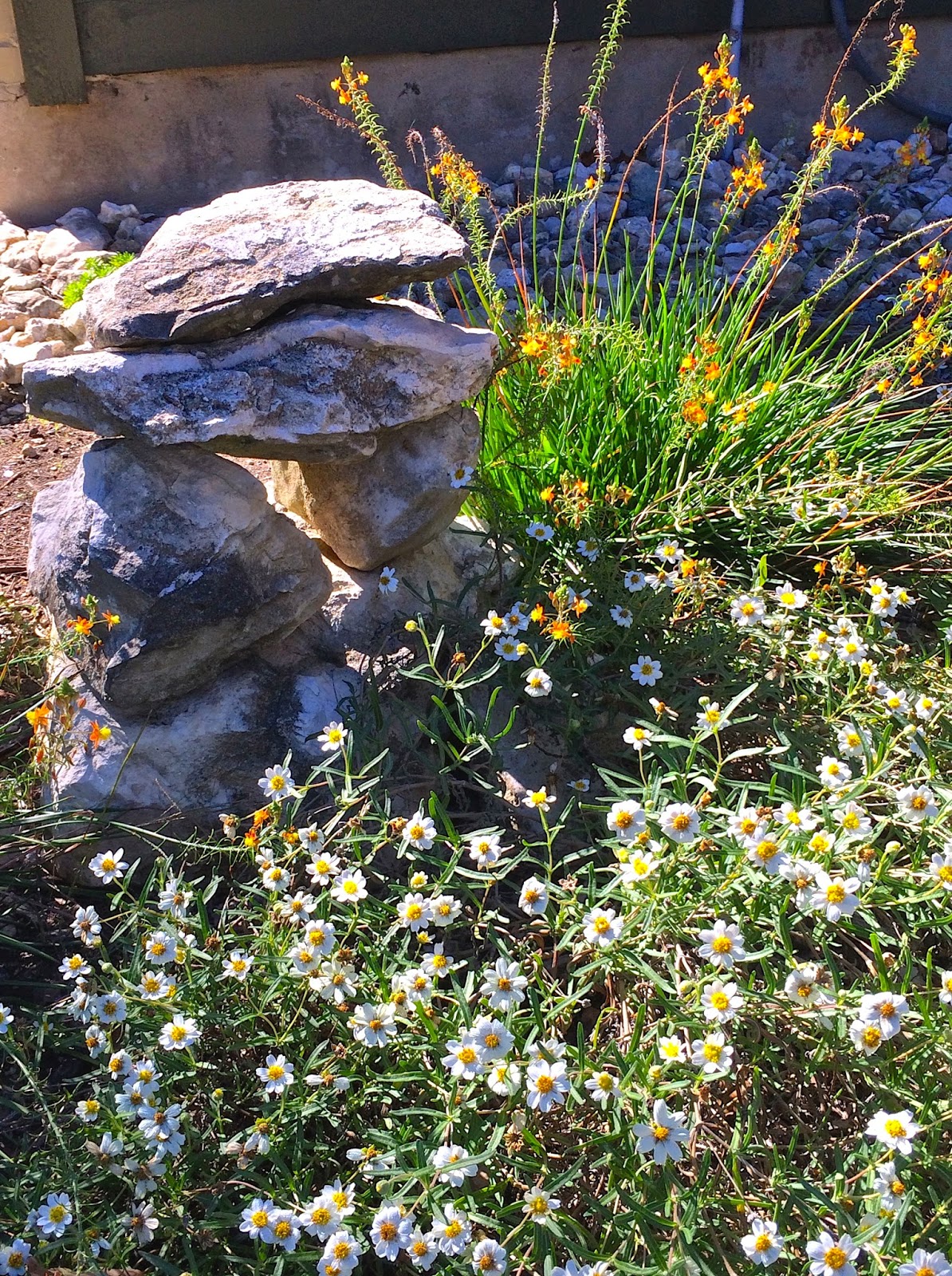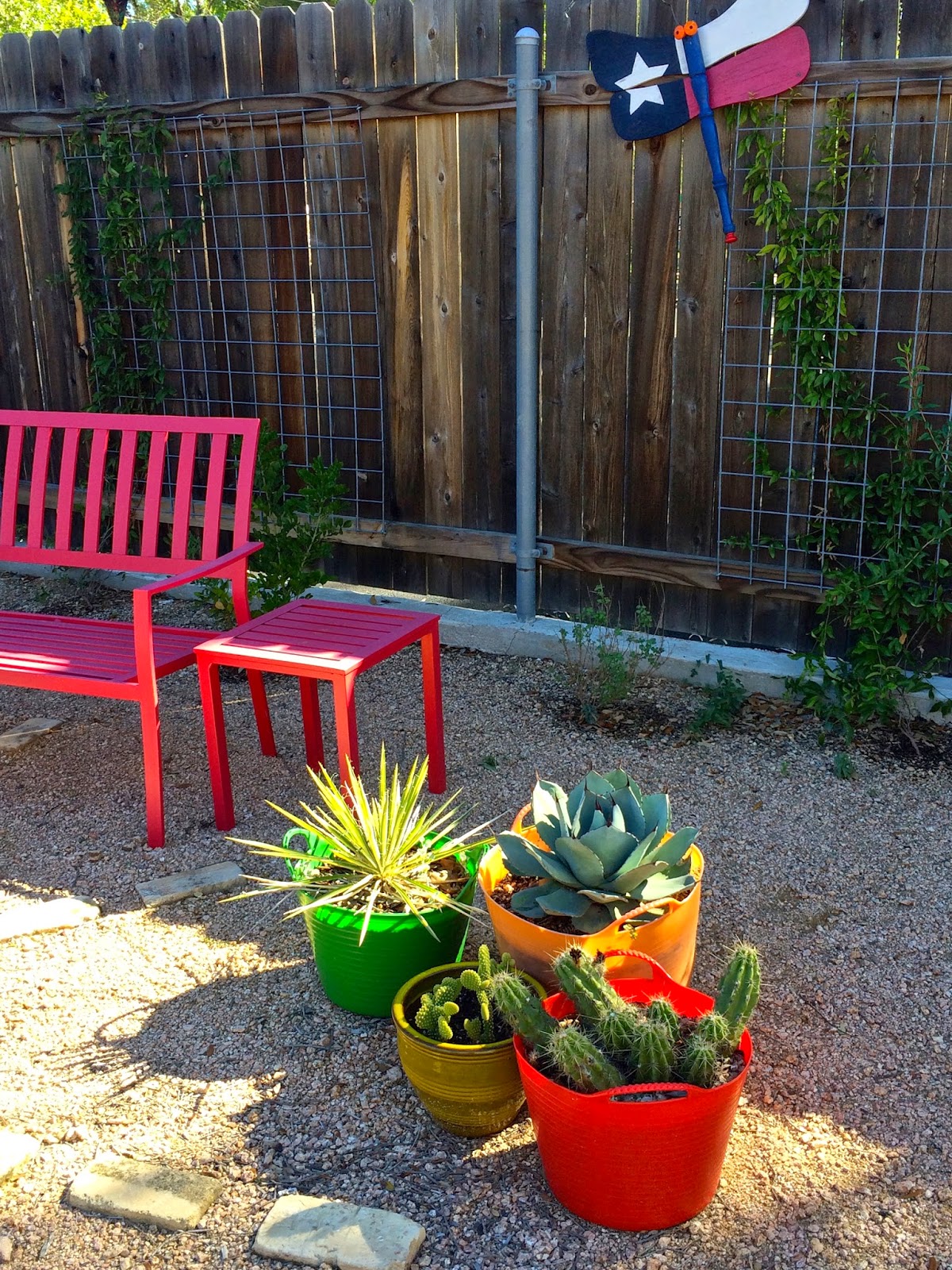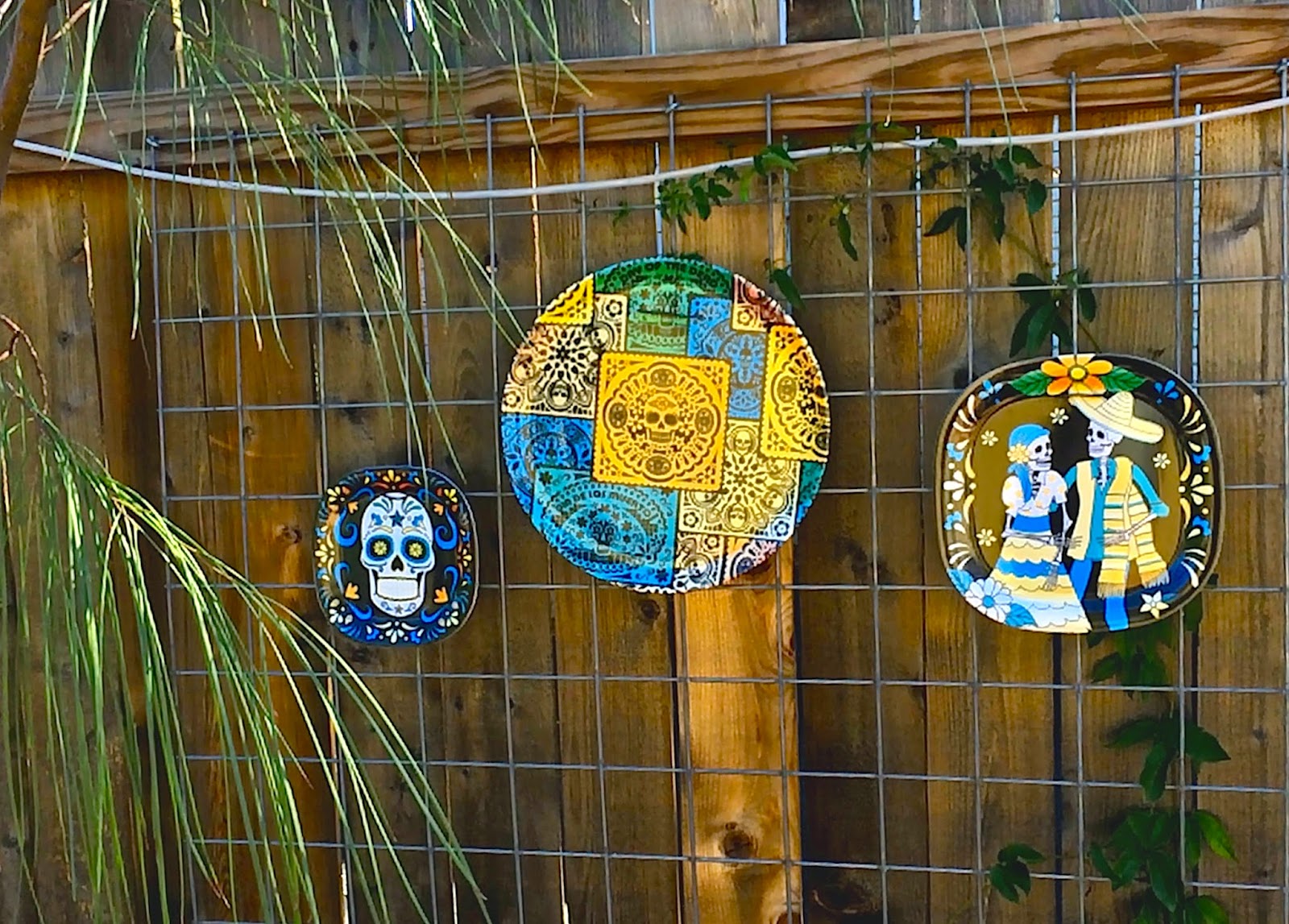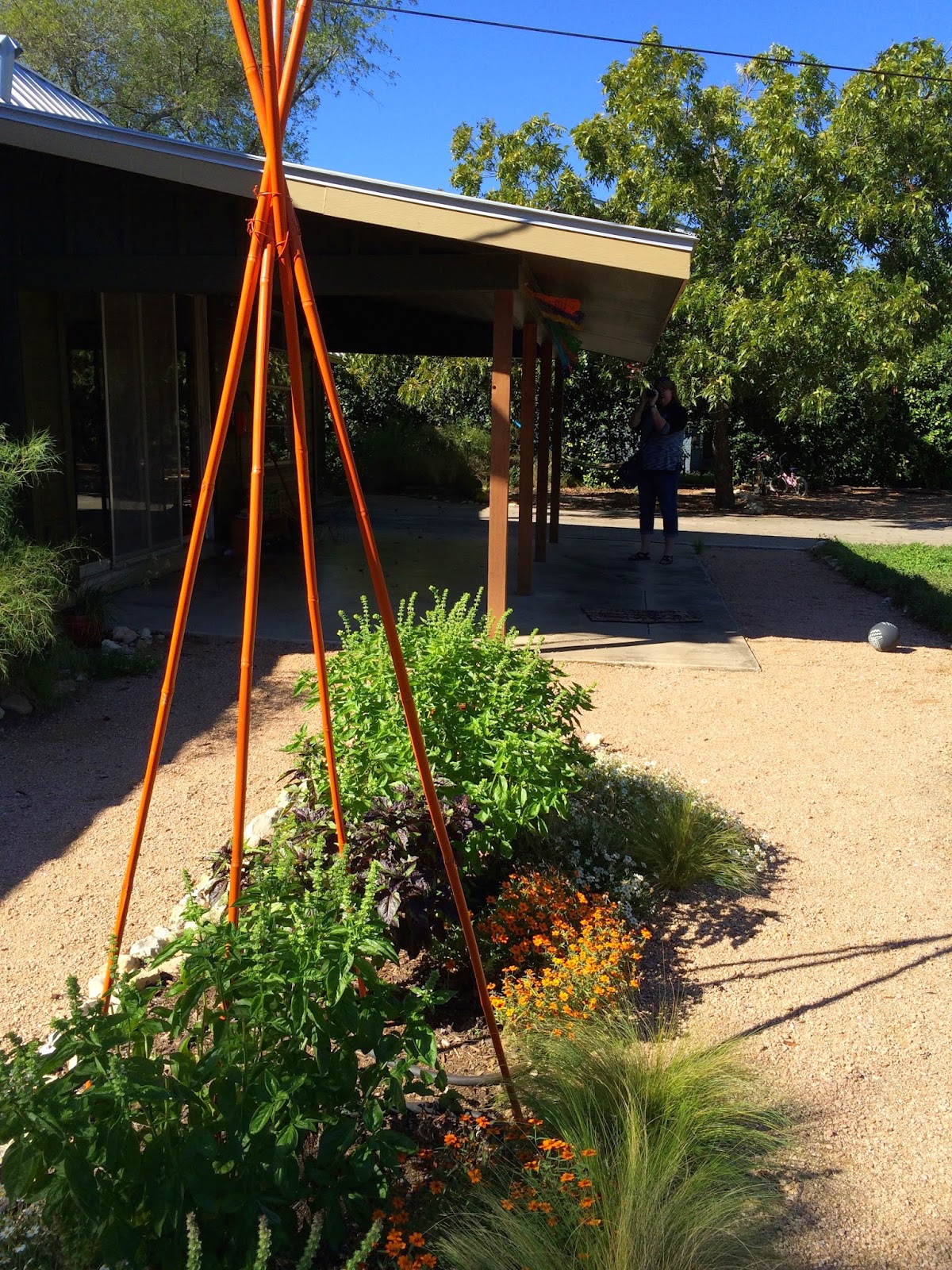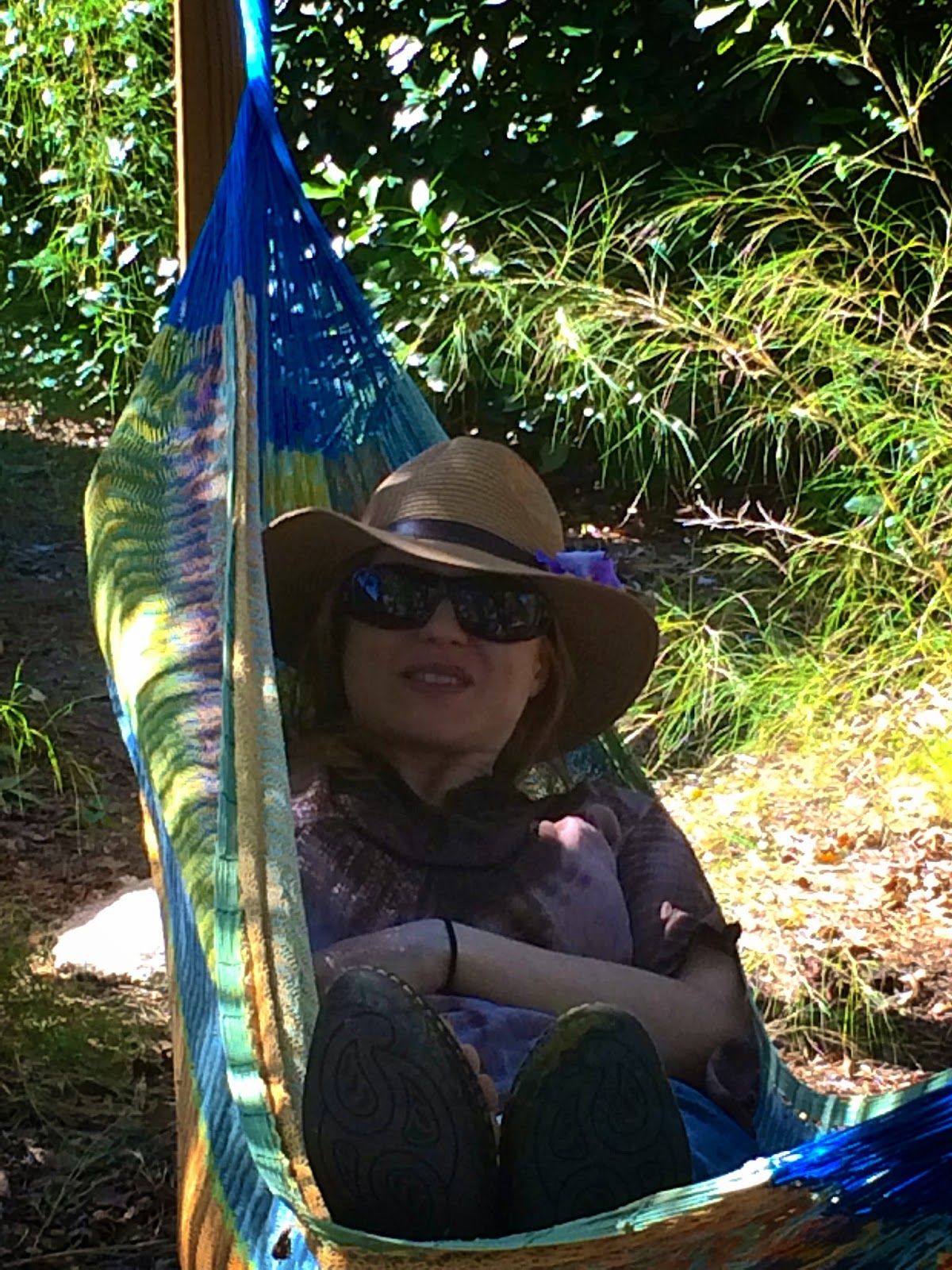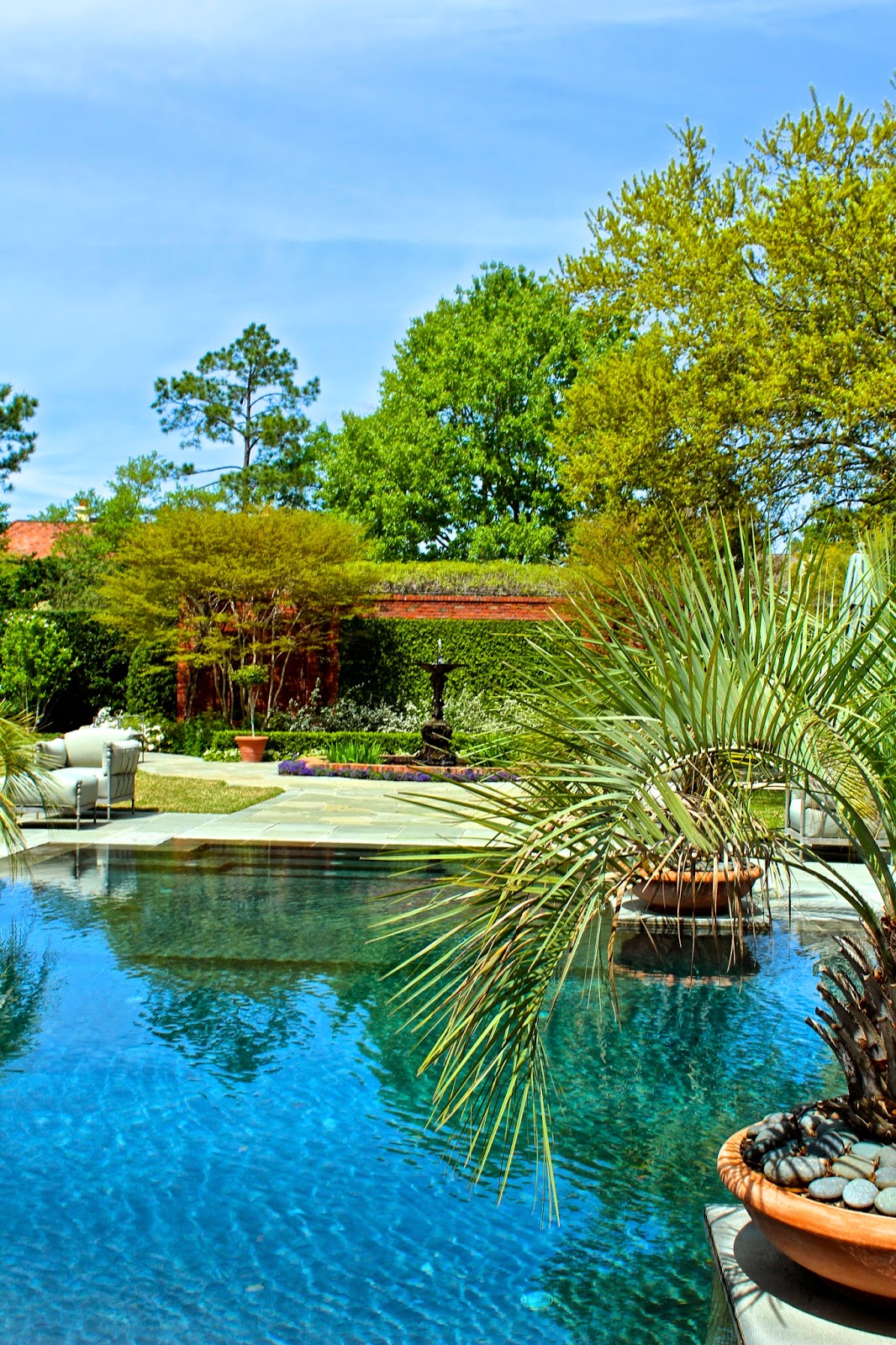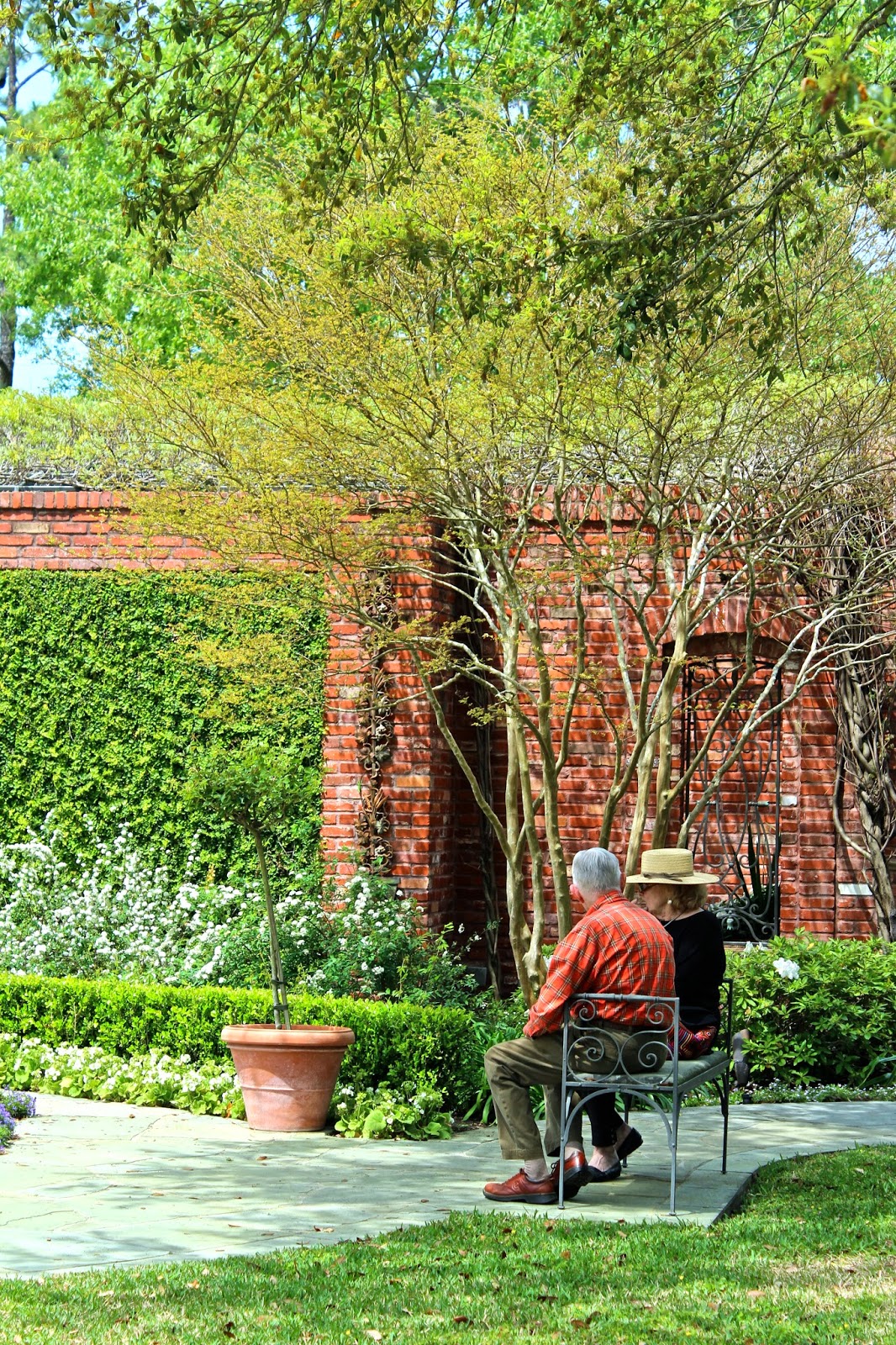Spring spruce up from a wide angle lens
One of the rites of spring (even though it has already been 94 degrees here in Austin, Texas), after the whining about winter, pruning, planting and mulching, is taking photos of the garden as it grows.
I recently bought a wide angle lens, primarily for use in photographing our landscaping jobs and getting a good overview. But, I haven’t put it to use here at home.
When I finished the recent spring planting and mulching work on the back garden (which is technically outside of our property line in the neighborhood easement), I decided to try out the new lens.
If you’re wondering WHY I am gardening and watering outside of our property, it’s because the back is bordered by hideous cedar trees.
Several years ago I decided to remedy the ugly cedar problem. I started a deer-resistant, drought-tolerant “trial bed” — all things that are tough as nails and can survive with next-to-no water. In the heat of summer I would drag the hose all the way back there and water with a oscillating sprinkler head only once a month if we hadn’t had rain.
But then came the barn. The neighbor on the country road far behind us decided he needed to build a barn — a RED barn — right on the back edge of our easement. Which you can see through the trees — see the silver metal roof — and below the little bit of red peeking through? Well, I can see it. So, I expanded the bed, planted soon-to-be large, screening plants, shrubs and trees and added an actual sprinkler head to make it easier to get the plants established at least, though I still don’t water often back there.
My goal is to eventually remove the cedars when the nicer plants have gotten large enough to provide some screen. On this end you’ll find a sharkskin agave, some quadricolor agaves, some creeping germander, two Kentucky coffee trees, given to me by my father, (thanks, Daddy!), a green goblet agave passalong from Pam of Digging , some newly planted Yaupon holly trees, and far in the back, a Mexican olive tree. Oh, and two hot pink oleander to coordinate with the desert willow and salvia on the other end.
I’ve added things slowly — some passalongs, some things that didn’t behave elsewhere in the garden and some things I just had to have. The goal is for this bed to be low maintenance. So, toward this end of the bed, you’ll find my beautiful whale’s tongue agave, a desert willow tree, some salvia, Jerusalem sage, zexmenia, euphorbia, dyckia, a few muhly grasses, indigo spires salvia, bright edge yucca, and some recently transplanted large native yuccas that came from a client’s overcrowded natural area. There are also two yaupon hollies on this end, hidden behind the other plantings.
This bed is mostly out of sight from the back deck, unless you walk down the steps leading to the back of the pool. The aerial shots (well, high as I could get them — me on the back pool sheer wall) give you a sense of the breath of the bed.
We’ve started pruning out some of the dead wood on the cedars and hope to start taking some of them out entirely in a few years. I have babies from my loquat tree in the front, so I think there will be a few loquats back there soon, as well. I will have to fence them until they get tall, since the deer have free reign back there and will think I finally served up something that they like to eat!
It’s nice when things come together in the garden, isn’t it?

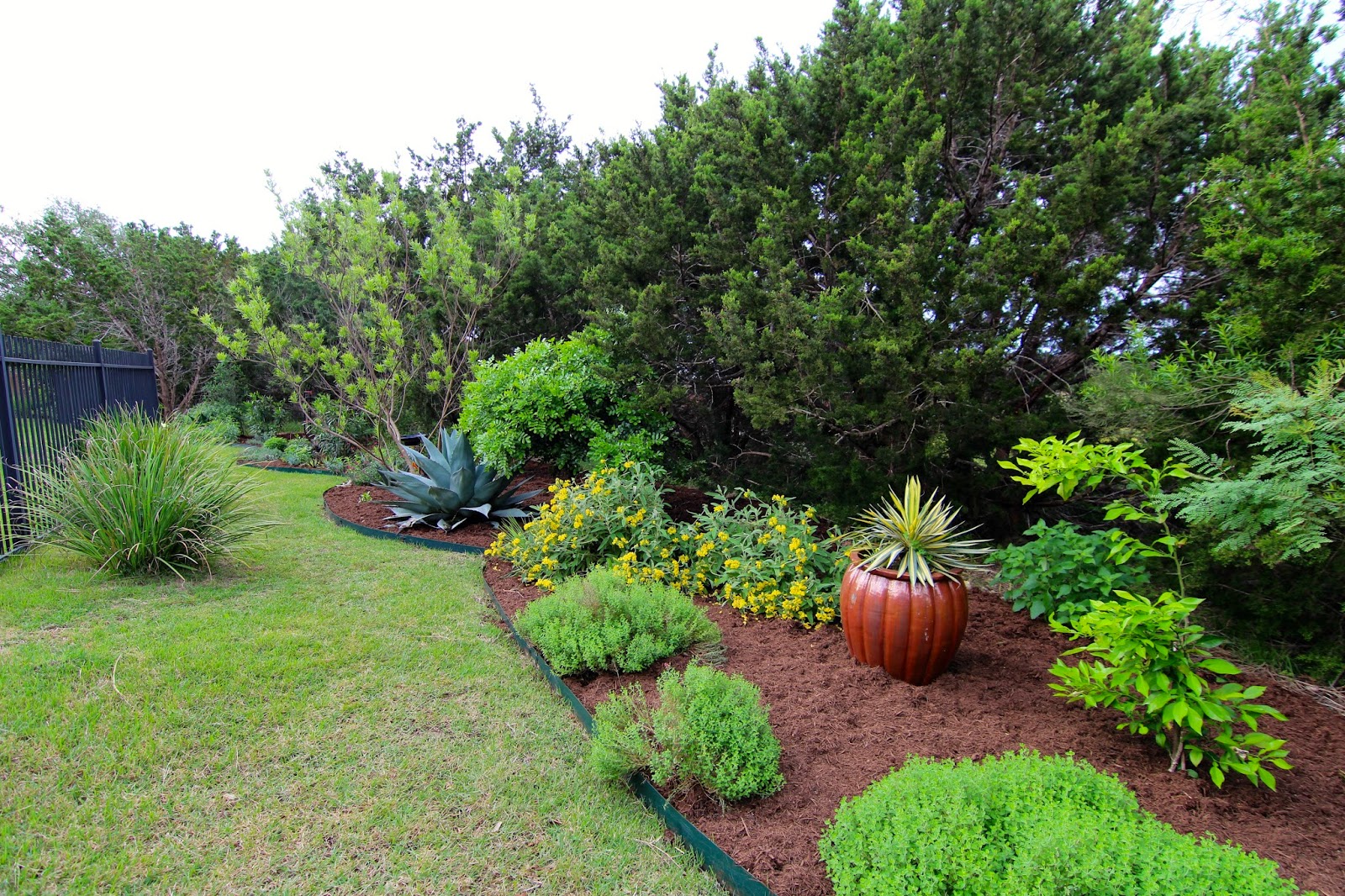
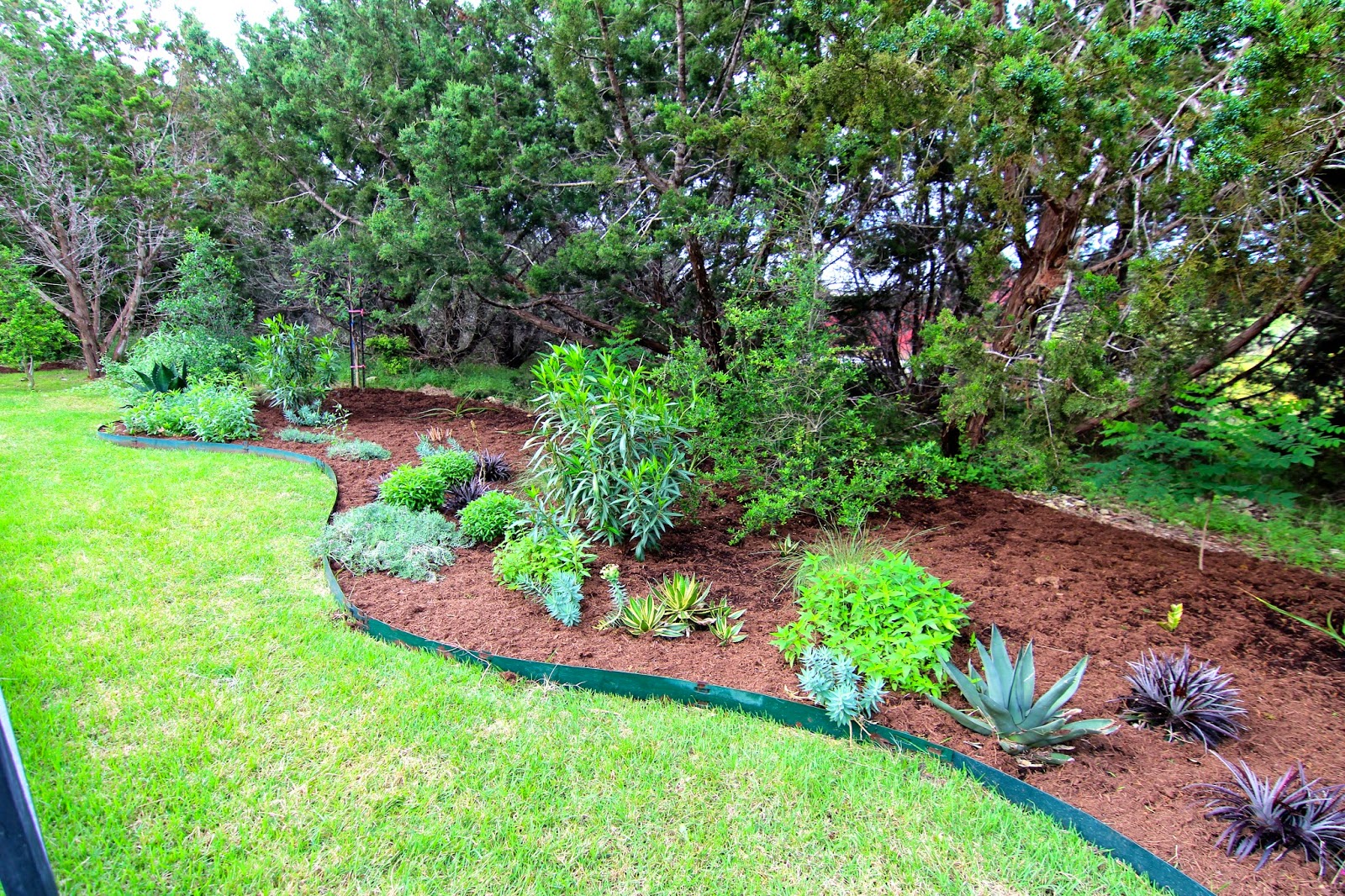
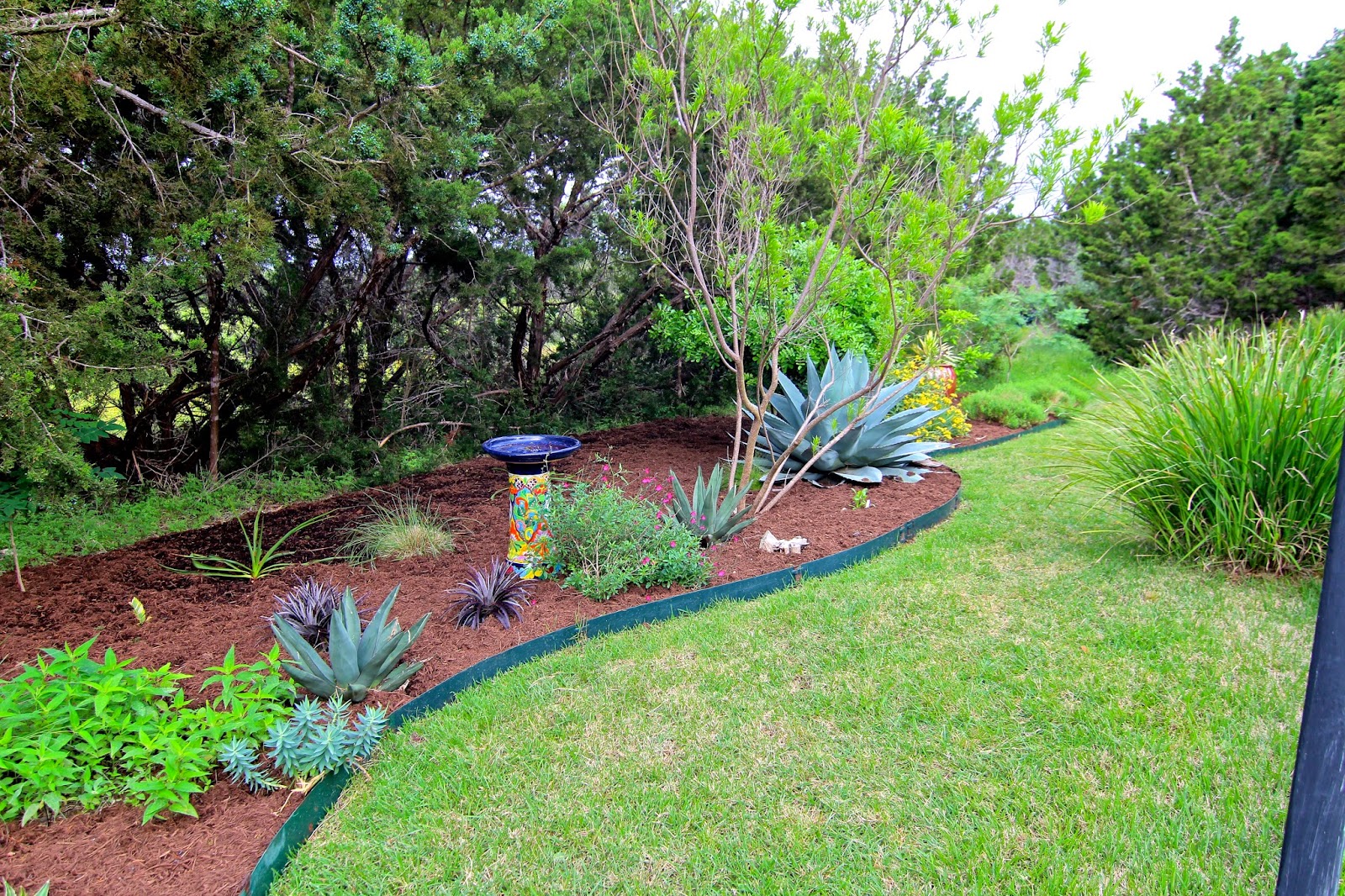
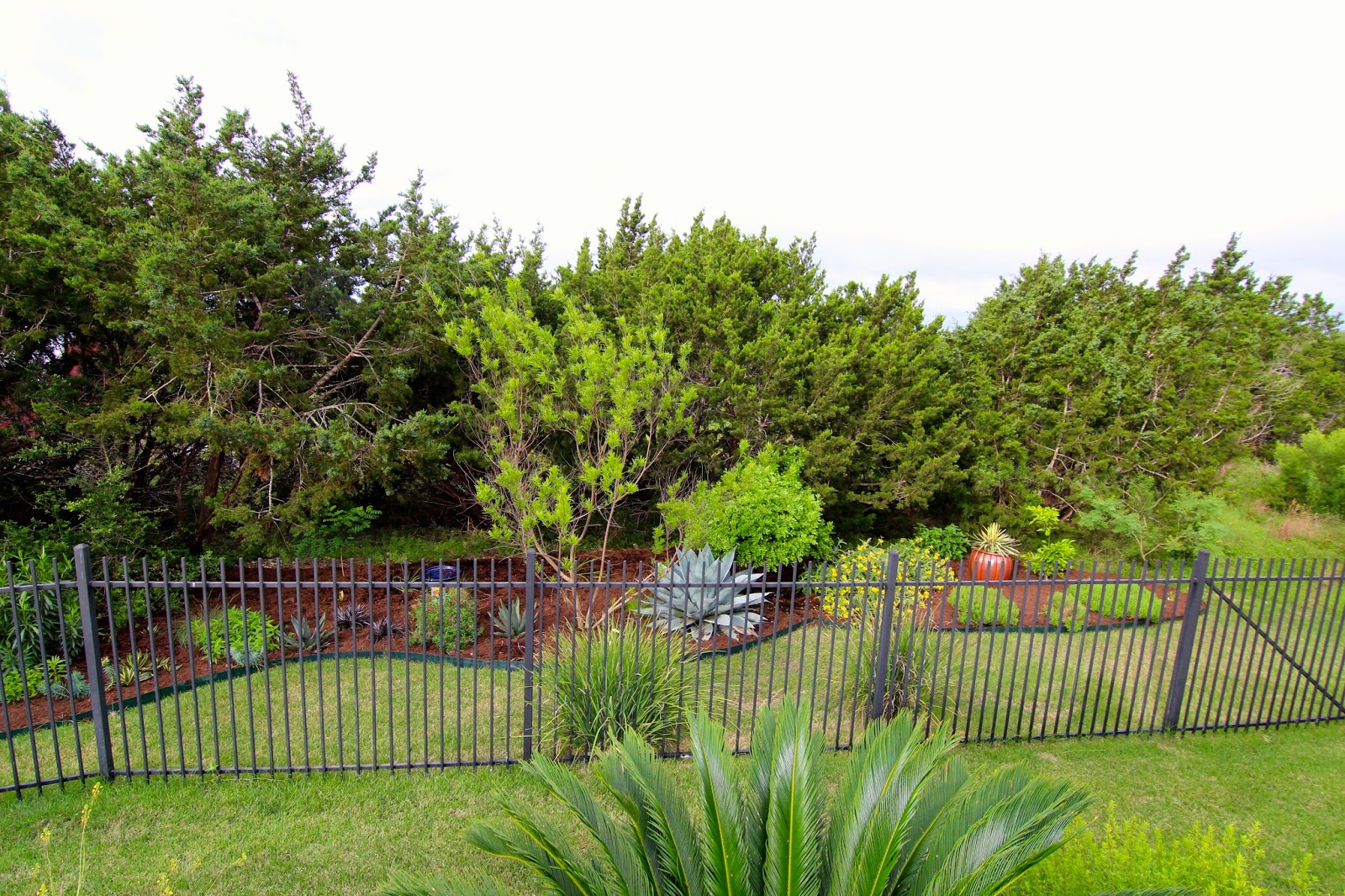
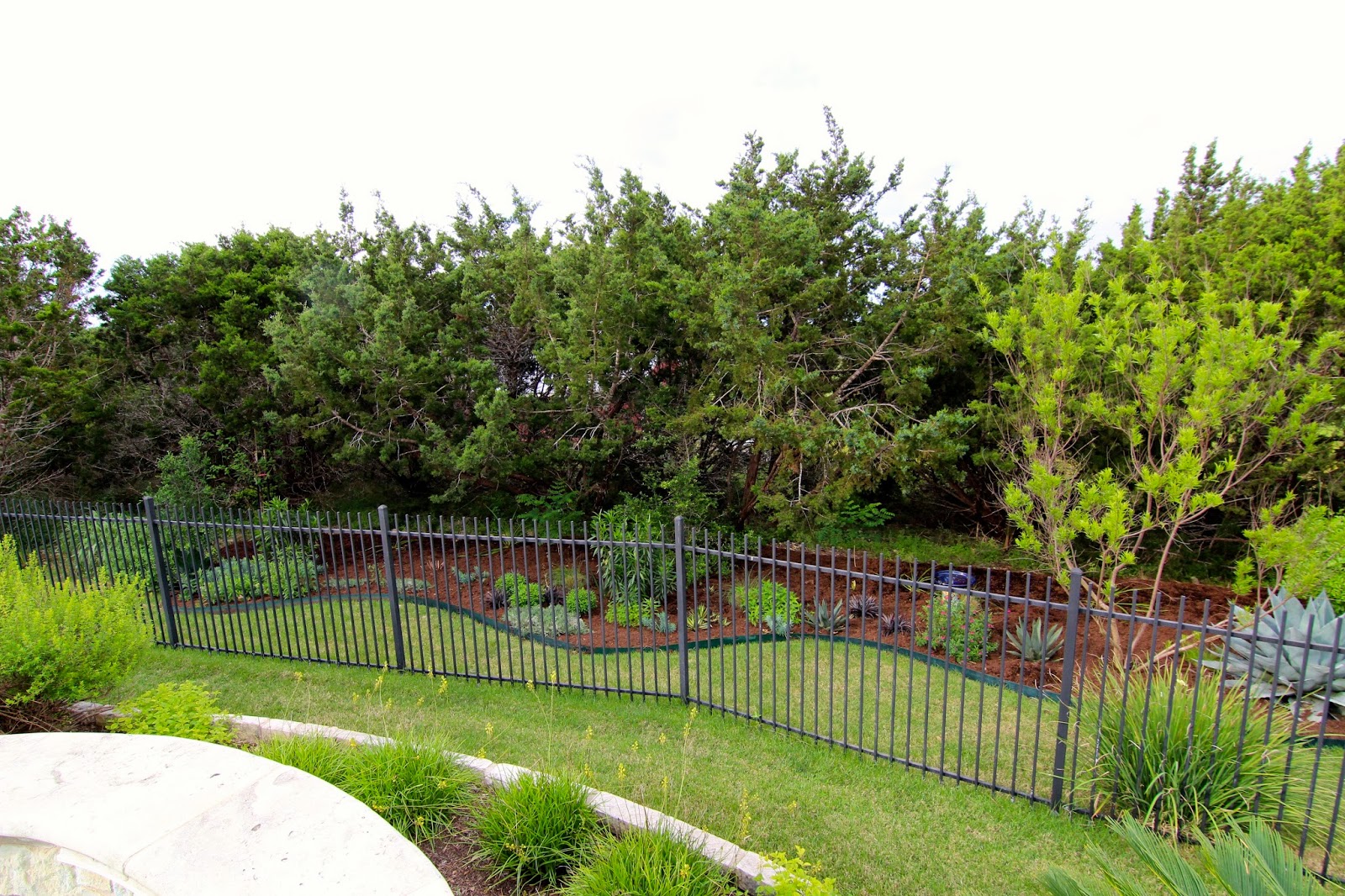
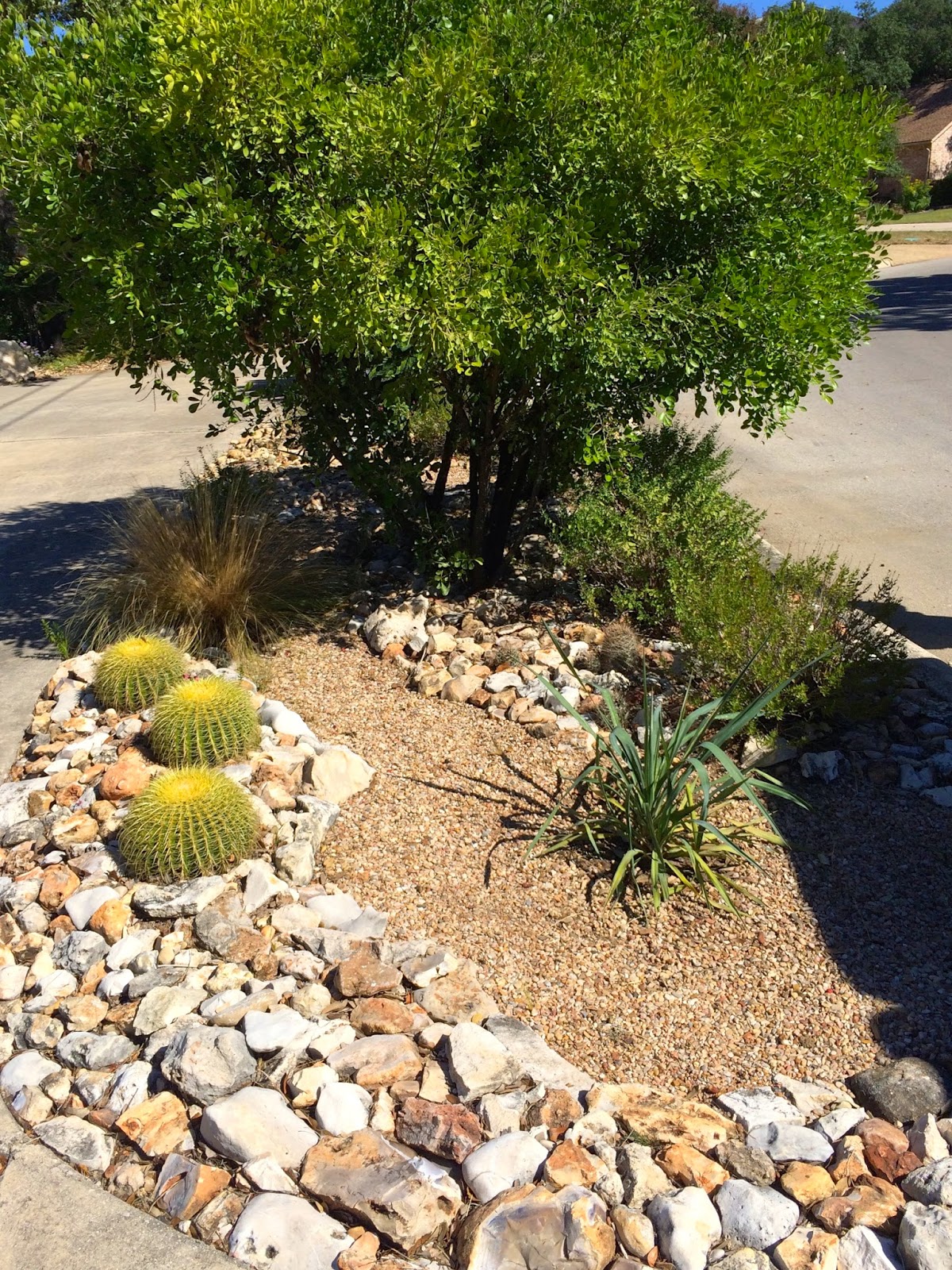
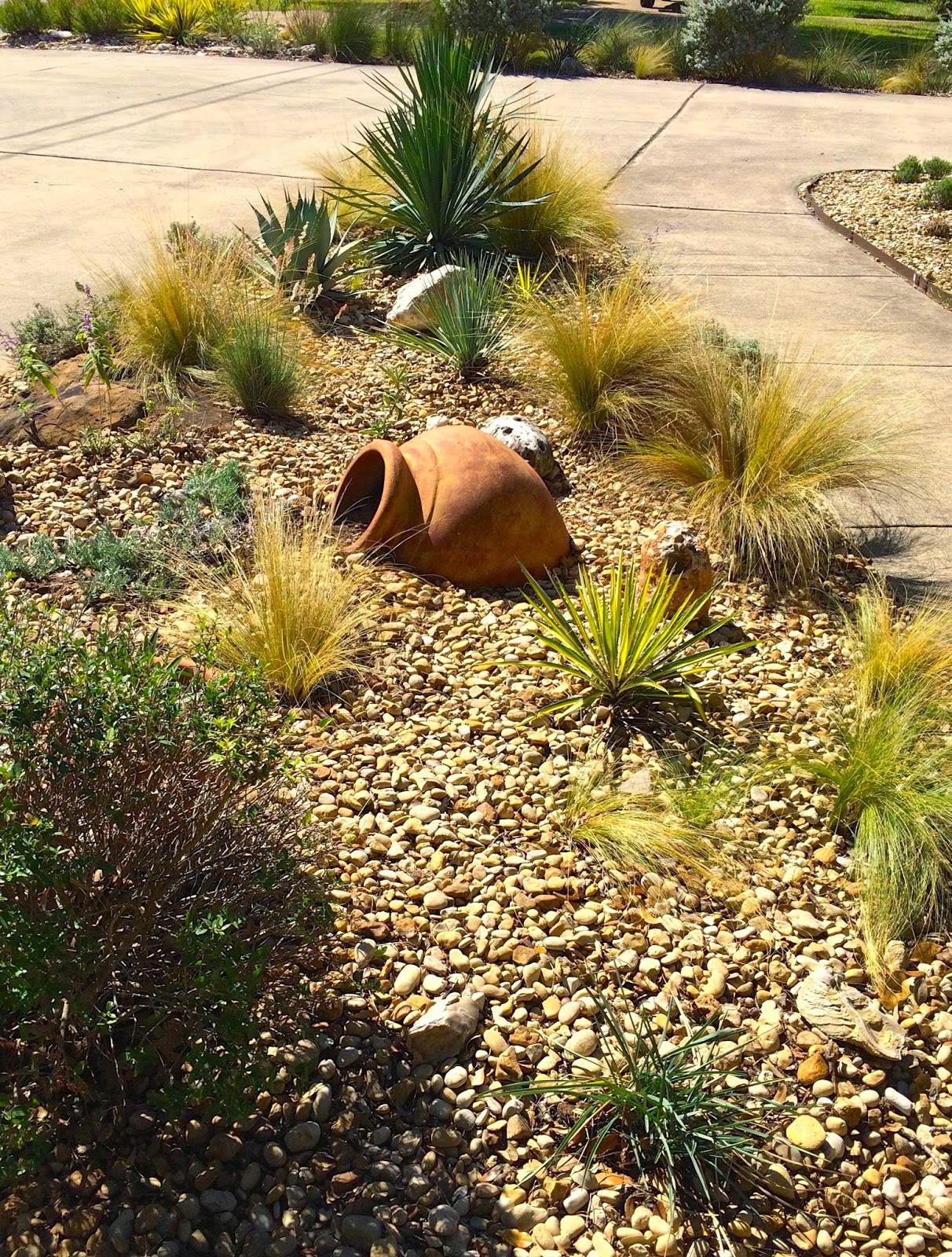
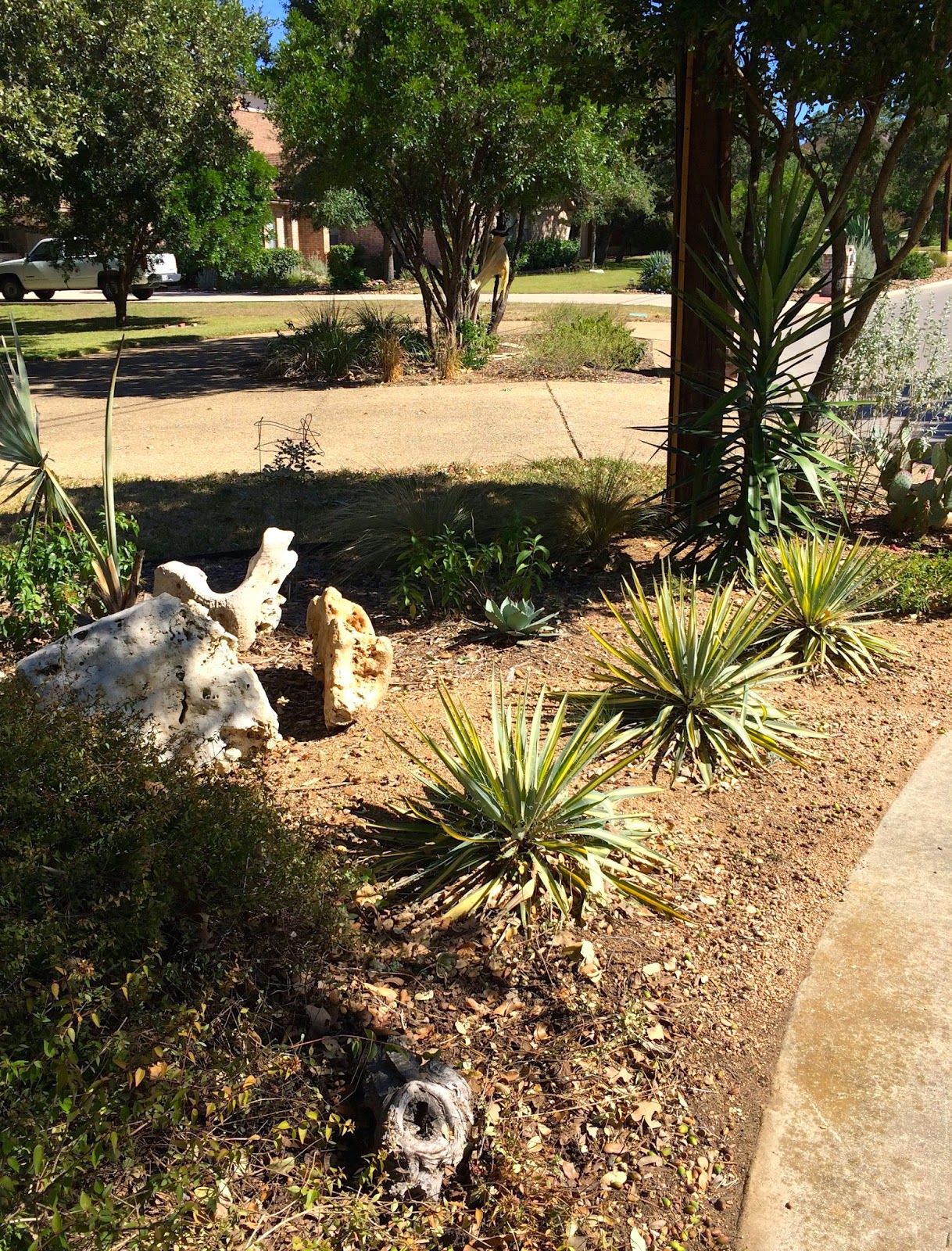

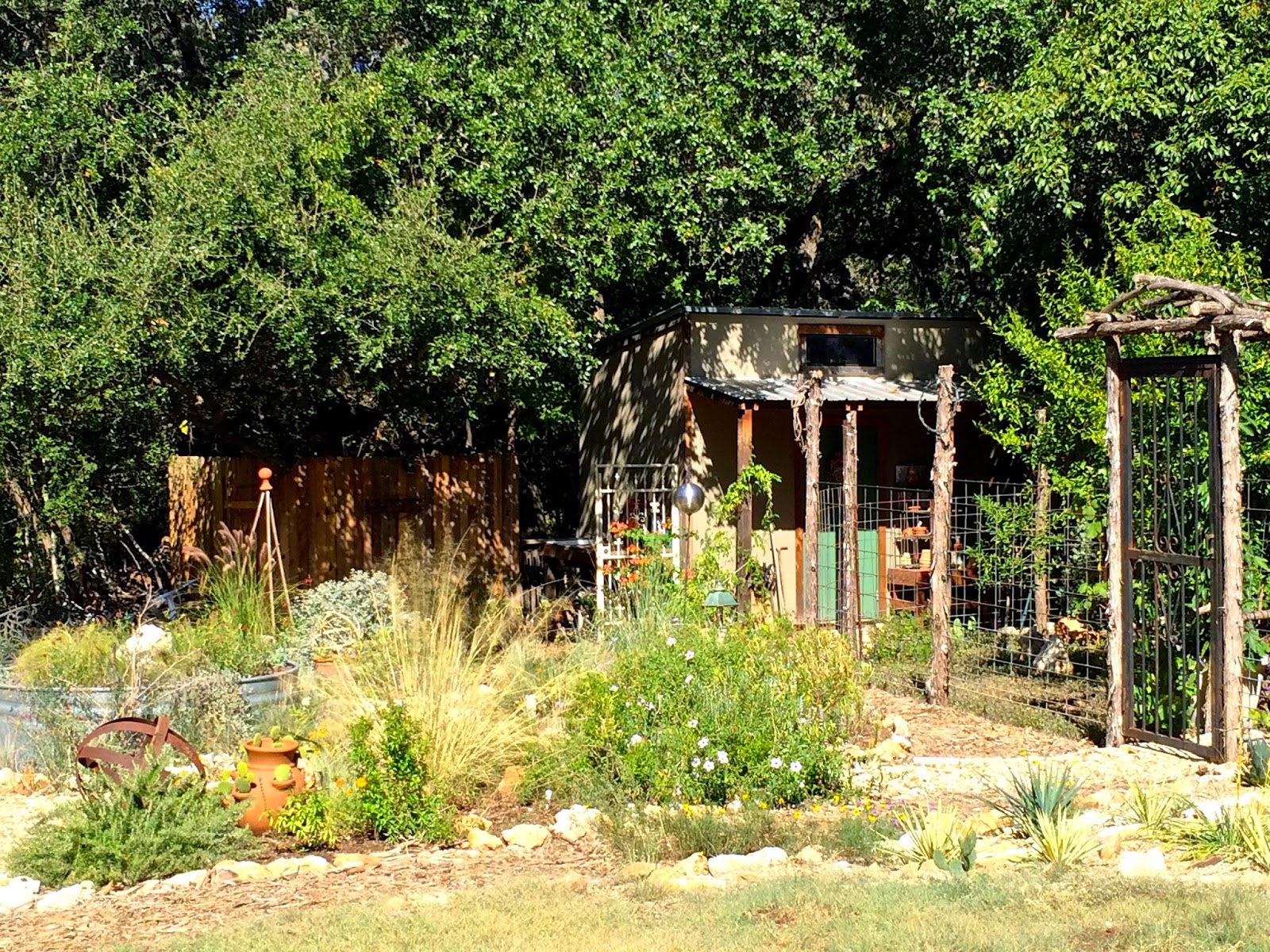


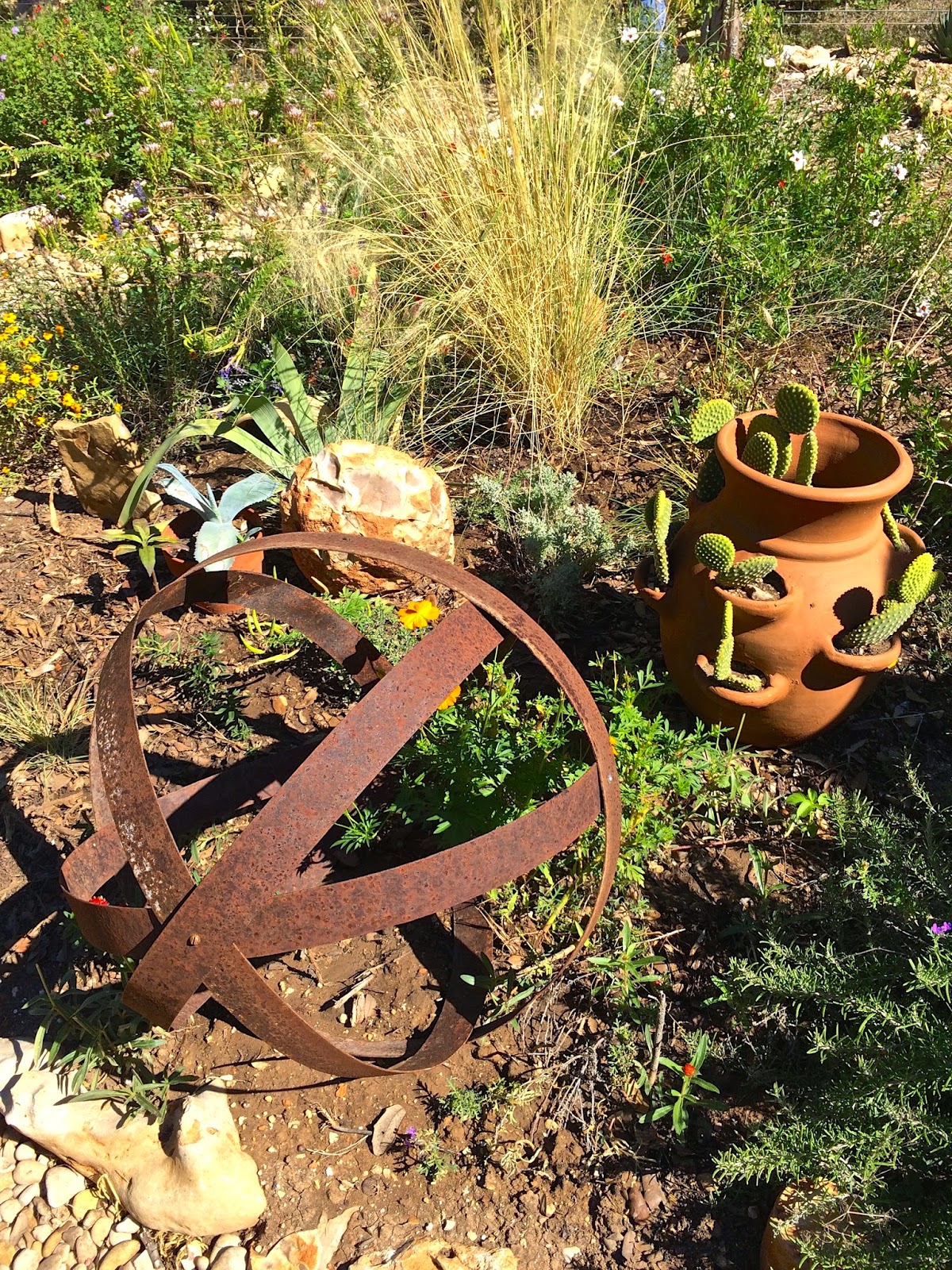
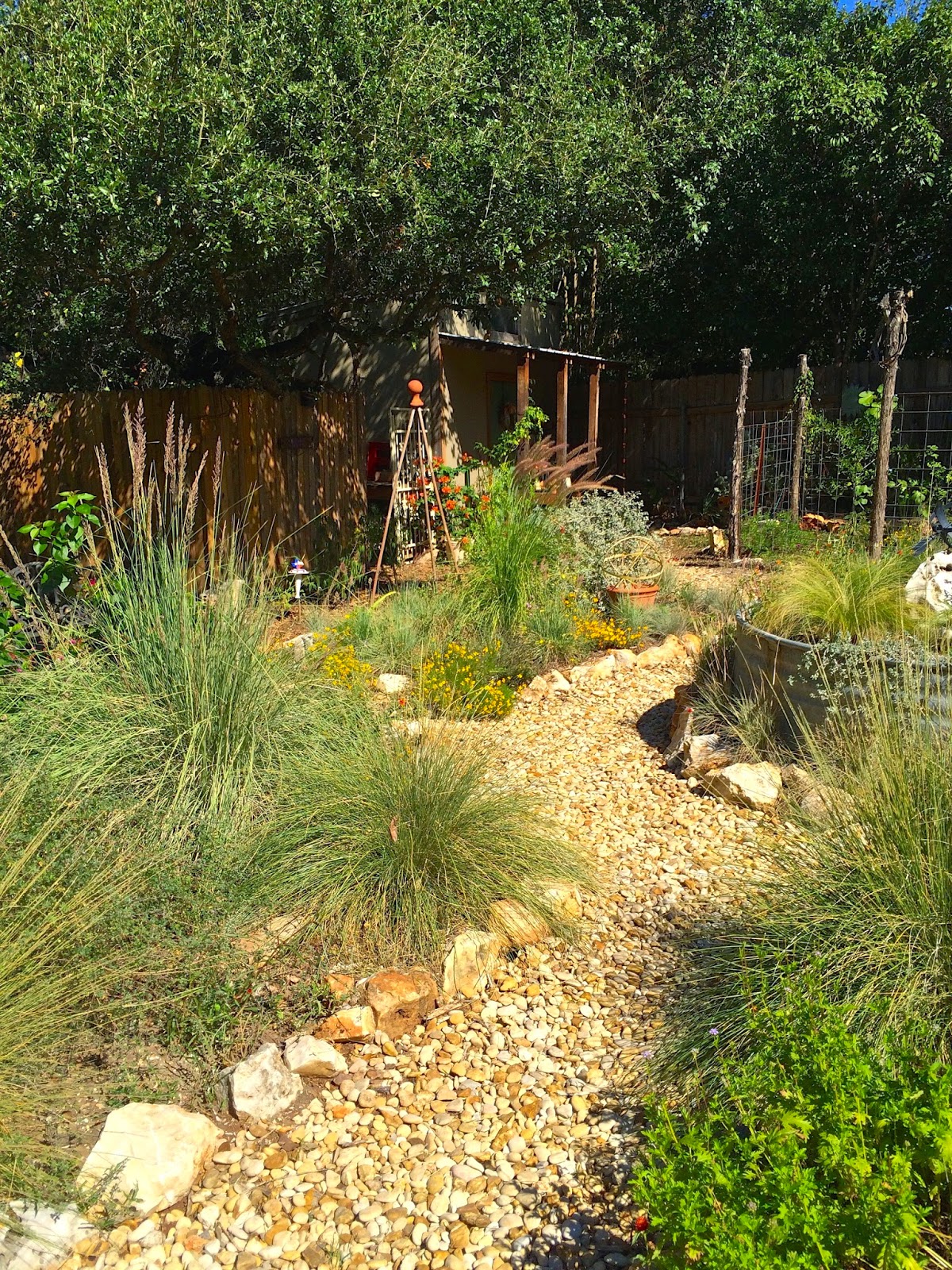
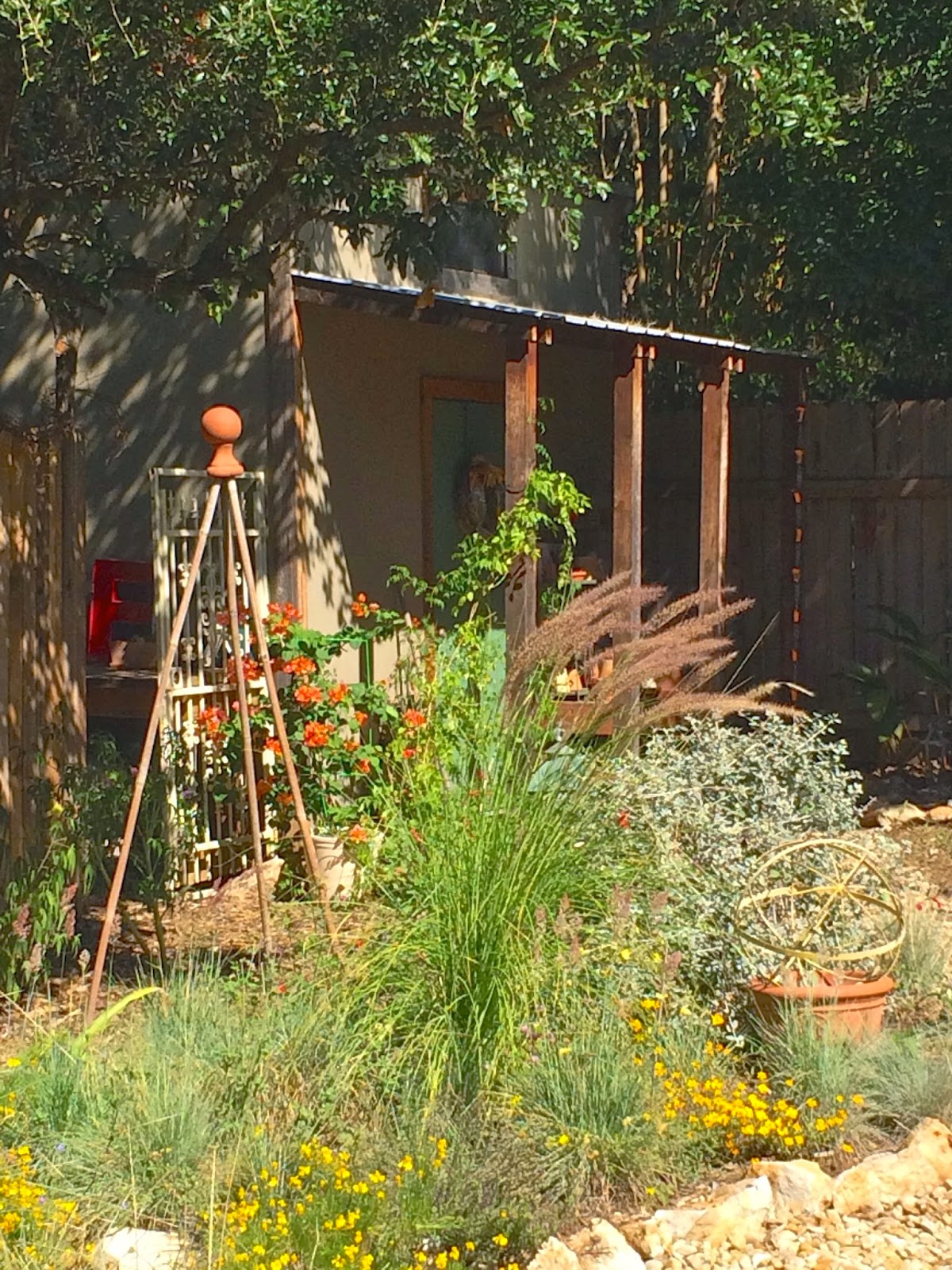




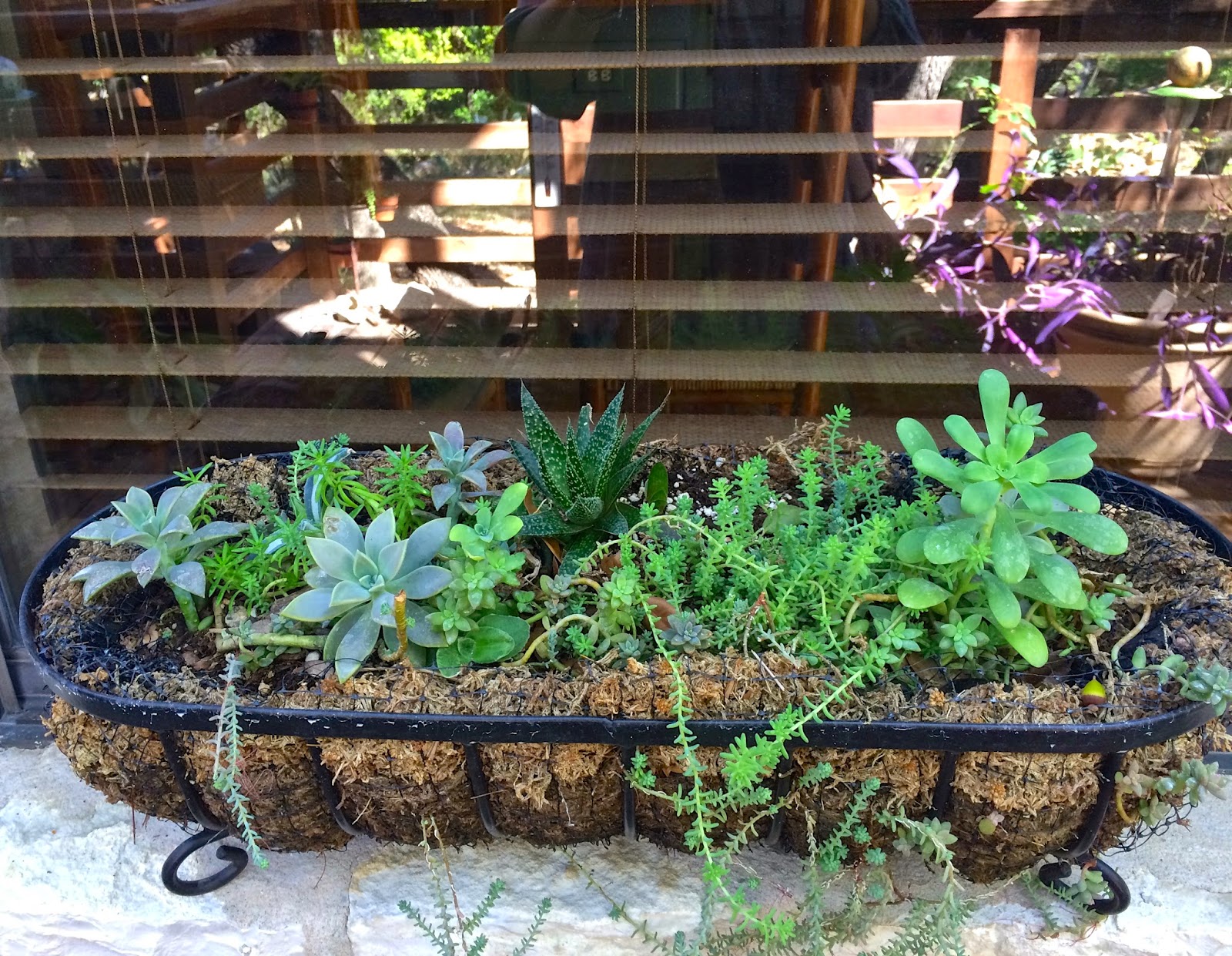


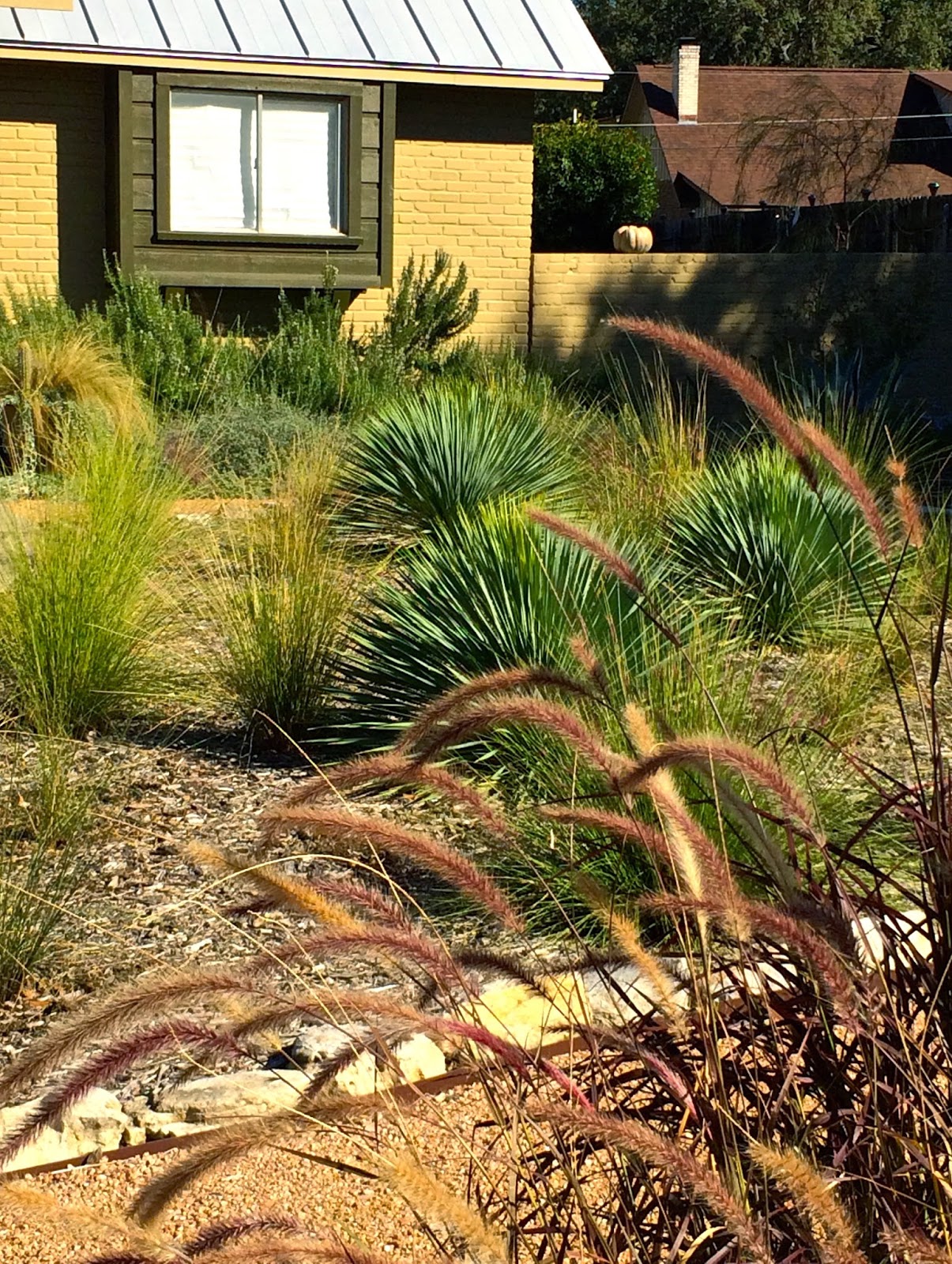




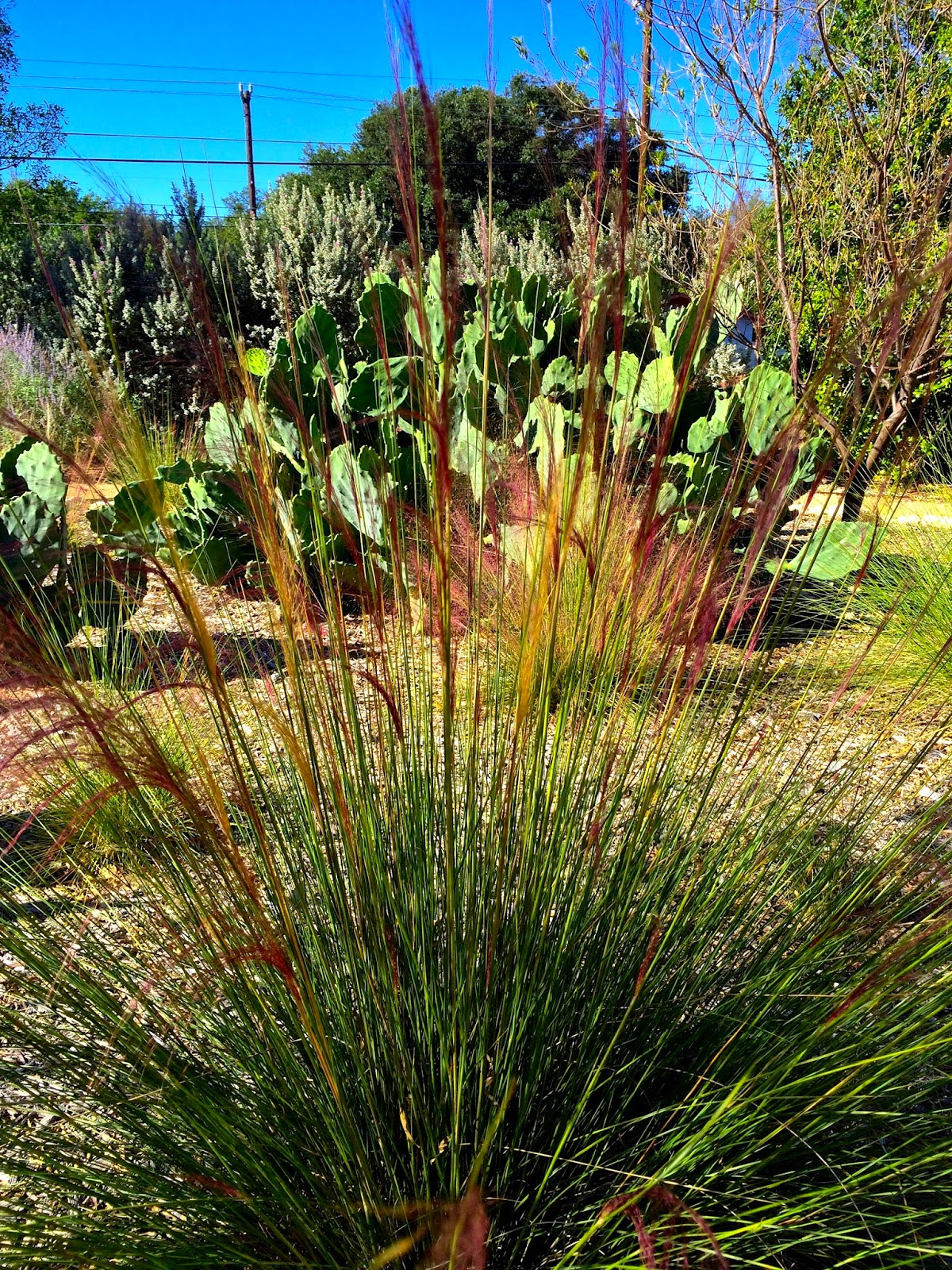
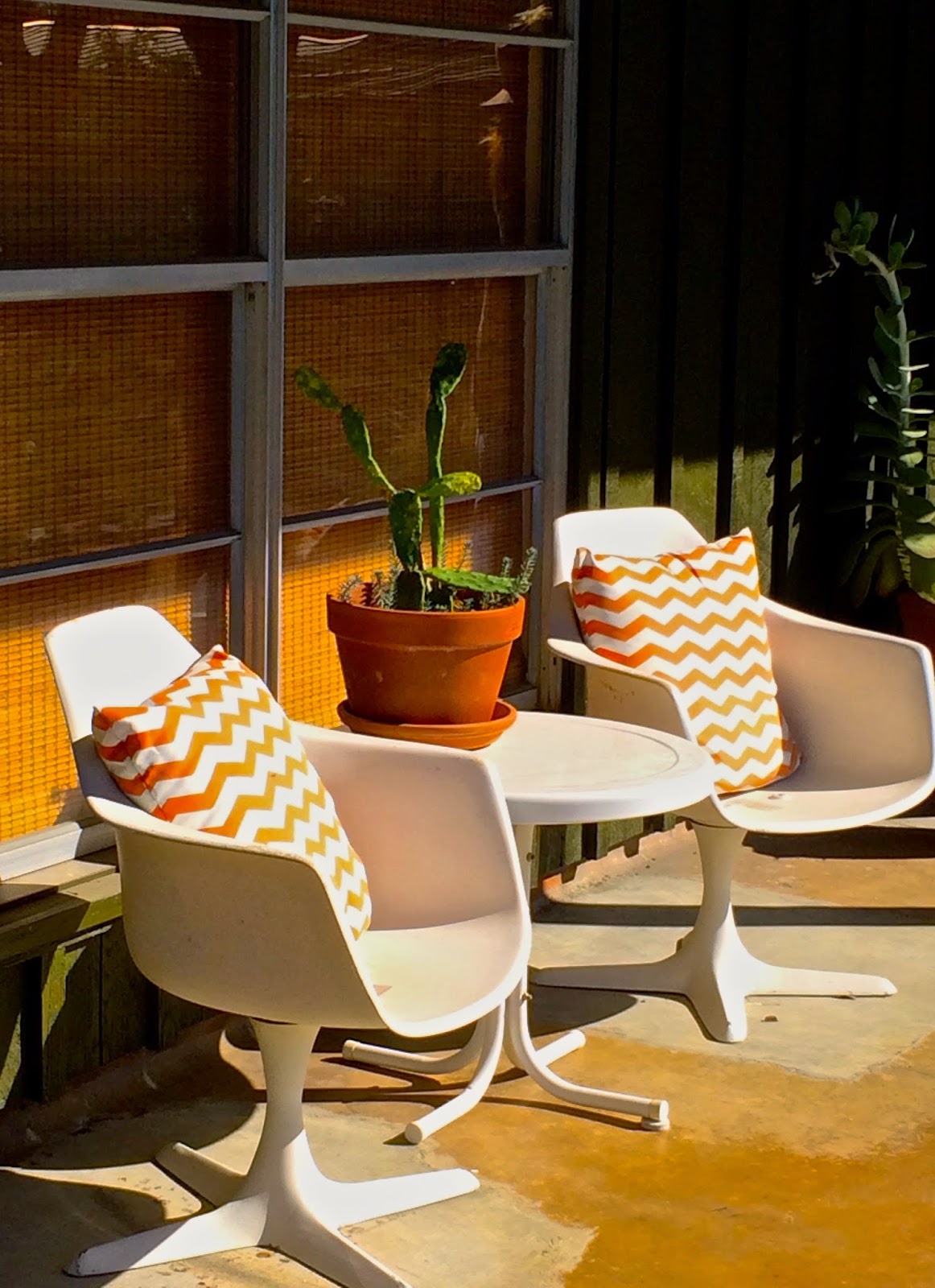



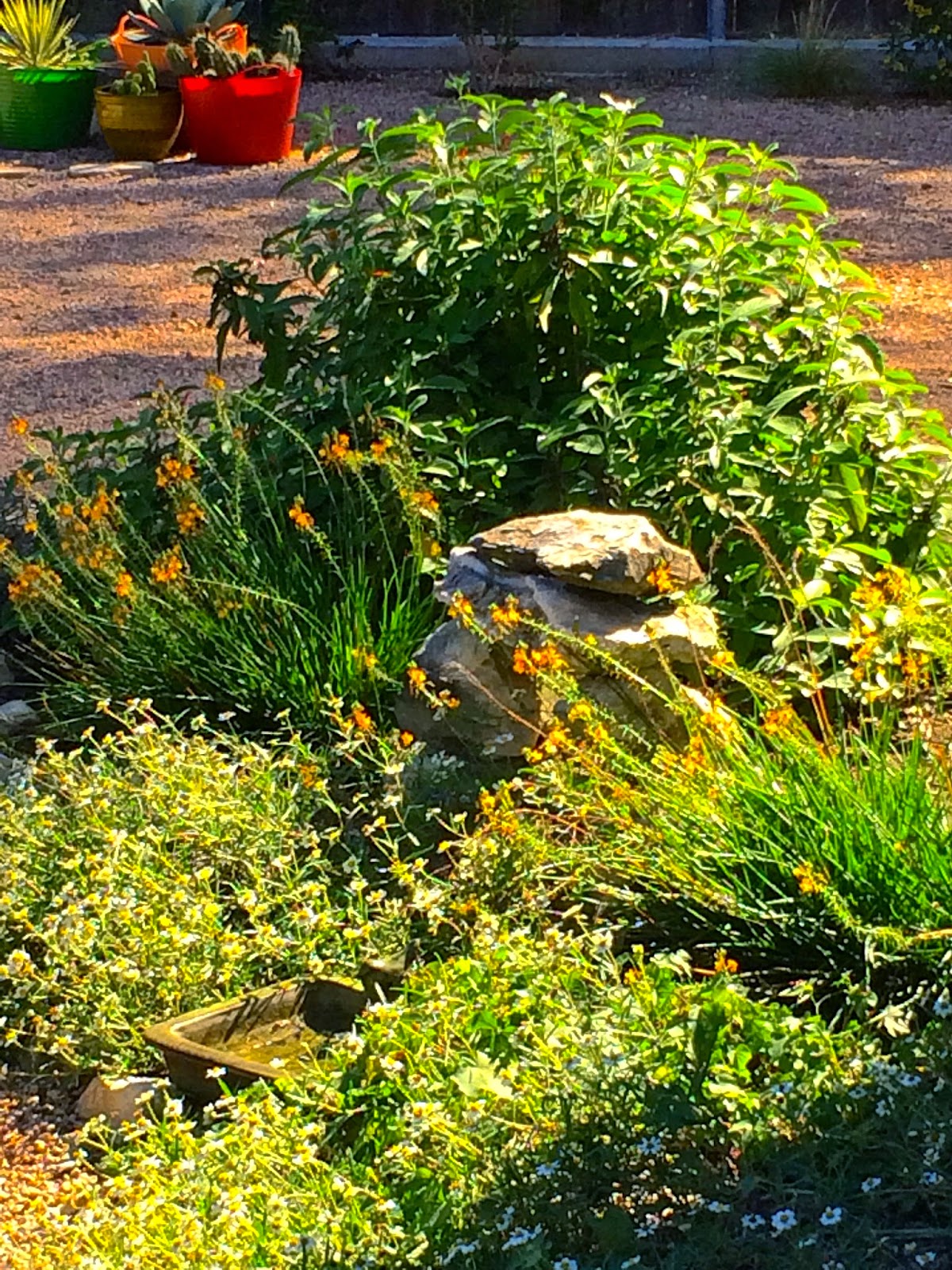 lov
lov